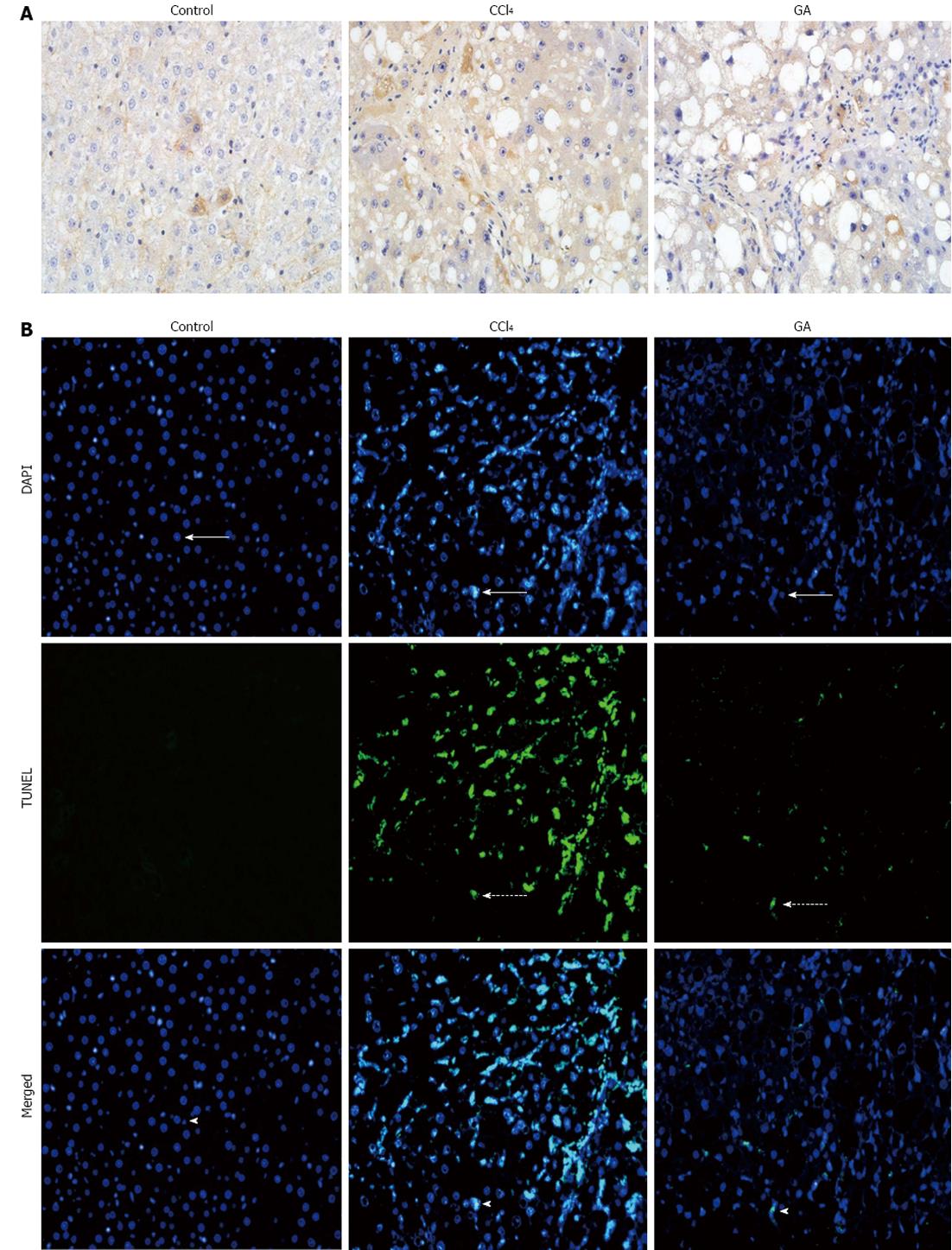Copyright
©2013 Baishideng Publishing Group Co.
World J Gastroenterol. Jun 28, 2013; 19(24): 3781-3791
Published online Jun 28, 2013. doi: 10.3748/wjg.v19.i24.3781
Published online Jun 28, 2013. doi: 10.3748/wjg.v19.i24.3781
Figure 2 Impact of glycyrrhizic acid treatment on hepatic apoptosis induced by carbon tetrachloride in rats.
A: Liver tissue sections from the different groups were subjected to immunohistochemistry to determine the expression level of cleaved caspase-3 (original magnification, × 400); B: Fluorescence microscopy image showing terminal deoxynucleotidyl transferase-mediated deoxyuridine 5-triphosphate nick end labeling (TUNEL) stain (dashed arrows), and the same tissue slices were respectively counterstained with 4’6-diamidino-2-phenylindole (DAPI) to localize the nuclei (arrows). Images of combined with DAPI, indicated TUNEL-positive cells (arrow heads) (original magnification, × 200). GA: Glycyrrhizic acid; CCl4: Carbon tetrachloride.
-
Citation: Guo XL, Liang B, Wang XW, Fan FG, Jin J, Lan R, Yang JH, Wang XC, Jin L, Cao Q. Glycyrrhizic acid attenuates CCl4-induced hepatocyte apoptosis in rats
via a p53-mediated pathway. World J Gastroenterol 2013; 19(24): 3781-3791 - URL: https://www.wjgnet.com/1007-9327/full/v19/i24/3781.htm
- DOI: https://dx.doi.org/10.3748/wjg.v19.i24.3781









